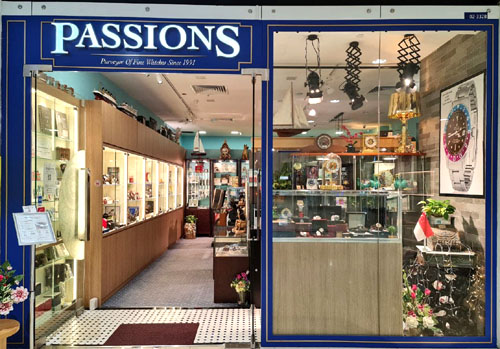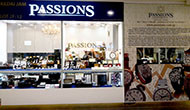Glossary
Welcome to the world of fine luxury timepieces. In order to familiarize yourself with various watch brands and its functionality, its important for you to know some of the standard terms in the industry. Here are some commonly used terms.
- C.O.S.C.
- The Control Officile Suisse de Chronometers, an independent regulatory council that tests and certifies (or fails) watch movements for chronometer status.
- Cabochon
- Usually used in reference to a decorative stone set in the watch crown. It can also mean any small gemstone.
- Calibre
- Originally used to mean the size of a watch movement, this term now denotes a type of movement (men's calibre, automatic calibre, etc). When a calibre number is accompanied by the manufacturer's mark, it serves as an indication of origin.
- Chronograph
- A watch that includes a built in stopwatch function - i.e., a timer that can be started and stopped to time an event. There are many variations on the chronograph. Some operate with a center seconds hand which keeps time on the watch's main dial.
Others use sub-dials to time elapsed hours, minutes and seconds. Still others show elapsed time on a digital display on the watch face. Some chronographs can be used as a lap timer (see "flyback hand" and "split seconds hand"). The accuracy of the stopwatch function will commonly vary from 1/5th second to 1/100th second depending on the chronograph.
Some chronographs will measure elapsed time up to 24 hours. Watches that include the chronograph function are themselves called "chronographs." When a chronograph is used in conjunction with specialized scales on the watch face it can perform ma ny different functions, such as determining speed or distance (see "tachymeter" and "telemeter") Do not confuse the term "chronograph" with "chronometer."
The latter refers to a timepiece, which may or may not have a chronograph function, that has met certain high standards of accuracy set by an official watch institute in Switzerland.See also: Rattrapante - Chronometer
- This term refers to the stopwatch itself, and more specifically a stopwatch with precision rigorously tested by the C.O.S.C. (see below) in Switzerland.
- Clasp
- The attachment used to connect 2 ends of the watch bracelet around the wrist.
- Complications
One or more features added to a watch in addition to its usual time-telling functions, which normally not only include the hours, minutes and seconds but also date and often the day of the week as well. Complications such as; perpetual calendars, moonphase displays, alarms, repeating mechanisms, quarter strikes as well as stop/start chronograph functions. Power reserve indicators are also usually regarded as 'complications'
- Crown
A crown is the button on the outside of the watch case that is used to set the time and date. In a mechanical watch the crown also winds the mainspring which in turn, moves the hands of the watch to tell time.
A screw in (or screw down/lock) crown is used to make a watch more water resistant. The crown actually screws into the case, dramatically increasing the water-tightness of the watch. This system was first patented by Rolex in the early 20th Century.Â
See also: Screw-lock crown, Winding stem
Passions Newsletter
Stay informed on our latest news!
Brands (5859)
- A.Lange & Sohne (55)
- Alain Silberstein (6)
- Anonimo Firenze (9)
- Audemars Piguet (218)
- Azimuth (4)
- Ball Watch Co (46)
- Baume & Mercier (31)
- Bell & Ross (56)
- Bertolucci (4)
- Blancpain (36)
- Bovet (4)
- Breguet (62)
- Breitling (123)
- BRM (5)
- Bucherer (2)
- Bulova (3)
- Bvlgari (64)
- Carl F Bucherer (4)
- Cartier (250)
- Cedric Johner (4)
- Chanel (15)
- Chopard (85)
- Christian Dior (2)
- Chronoswiss (30)
- Concord (13)
- Corum (60)
- Cvstos (5)
- Cyma (4)
- Daniel Roth (30)
- De Bethune (4)
- de GRISOGONO (10)
- deLaCour (5)
- DeWitt (4)
- Dubey & Schaldenbrand (7)
- Dunhill (10)
- Ebel (14)
- Eberhard & Co (4)
- Elgin (1)
- Eterna (3)
- European Company Watch (6)
- Fendi (0)
- Fortis (14)
- FP Journe (16)
- Franc Vila (3)
- Franck Muller (158)
- Frederique Constant (13)
- Gerald Genta (46)
- Gevril (1)
- Girard Perregaux (79)
- Glashütte Original (49)
- Glycine (7)
- Graham (28)
- Gruen (2)
- Gubelin (1)
- Gucci (5)
- Hamilton (21)
- Hanhart (0)
- Harry Winston (5)
- Hautlence (4)
- Hebdomas (1)
- Helios (1)
- Henry Moser & Co (9)
- Hublot (92)
- Hugo Boss (1)
- Ikepod (2)
- Illinois (0)
- International Watch Co. (346)
- Jaeger LeCoultre (192)
- Jaquet Droz (7)
- Jean Marcel (3)
- JeanRichard (15)
- Jorg Hysek (3)
- Juvenia (2)
- Kelek (3)
- Lamborghini (0)
- Leonard (0)
- Linde Werdelin (4)
- Longines (44)
- Louis Vuitton (12)
- Mauboussin (7)
- Maurice Lacroix (69)
- Mido (3)
- Minerva (2)
- Mont Blanc (38)
- Montega (4)
- Movado (10)
- Müehle Glashütte (0)
- Nomos (3)
- Omega (346)
- Oris (37)
- Other Brands (142)
- Panerai (372)
- Parmigiani (12)
- Patek Philippe (302)
- Paul Picot (7)
- Perrelet (8)
- Philippe Charriol (0)
- Piaget (35)
- Pierre Kunz (3)
- Porsche Design (6)
- Rado (3)
- Raymond Weil (10)
- Revue Thommen (6)
- Richard Mille (4)
- Roger Dubuis (54)
- Rolex Gents (537)
- Rolex Ladies (179)
- Rolex Vintage (115)
- Rotary (1)
- Russian brands (0)
- RXW (8)
- Schwarz Etienne (0)
- Seiko, Seikosha (14)
- Sinn (34)
- Sothis (0)
- Tabbah (4)
- Tag Heuer (148)
- Tiffany & Co (14)
- Tissot (12)
- Titus (1)
- Tudor (63)
- Tutima (1)
- U-Boat (27)
- Ulysse Nardin (43)
- Union Glashütte (2)
- Universal Geneve (4)
- Urwerk (3)
- Vacheron Constantin (65)
- Versace (1)
- Vianney Halter (5)
- Vulcain (7)
- Waltham (3)
- Watch Craft (1)
- West End Watch Co (2)
- Wyler Geneve (21)
- Xemex (2)
- Zenith (64)
- Zeno (4)
Singapore Gallery
Marina Square #02-332B
(Pan Pacific Hotel side)
Daily: 1.30pm to 8.30pm
Tel: +65 6334 2221
WhatsApp: +65 86922100
Retro Kulture our vintage lifestyle store
Peninsula Shopping Centre #02-09 (Excelsior)
Mon, Fri & Sat only: 1.30pm to 7.00pm






